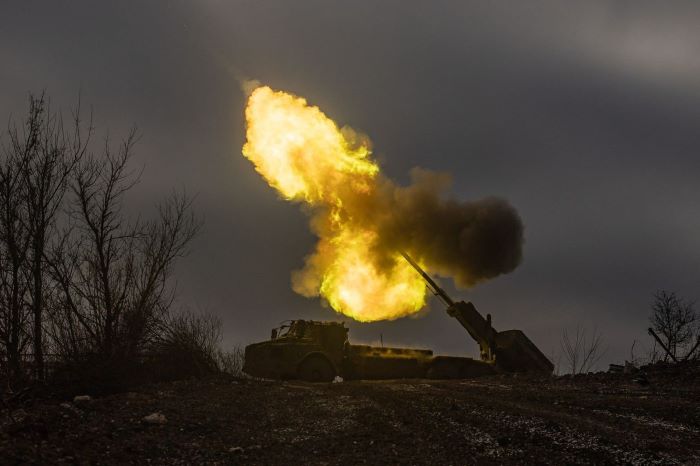Russi’s ability to conduct operational level rotations will likely allow Russian forces to maintain the overall tempo of their localized offensive operations in eastern Ukraine, ISW said in its daily report.
The Russian military deployed an entire combat-capable ground force of 462,000 personnel in Ukraine, Ukrainian Main Military Intelligence Directorate (GUR) Deputy Chief Major General Vadym Skibitskyi said on 11 January. This allegedly allows Russia to conduct routine operational level rotations” by withdrawing degraded units from the frontlines for rest and replenishment.
Skibitskyi said that Russian troop levels in Ukraine stand at “between 92 and 95 percent of their intended end strength.” This enables rotations as units at “50 percent or less of their intended end strength” can be pulled back, recovered and returned to combat.
Russian Security Council Deputy Chairperson Dmitry Medvedev confirms this assessment, claiming over 500,000 new Russian personnel were generated in 2023 through “ongoing crypto-mobilization,” ISW reported.
ISW said that while these have yielded “marginal” territorial gains since October 2023, rotations “in principle mitigate the degradation of attacking Russian forces.
ISW also observed that it is “unlikely” Russia can sustain to conduct effective rotations in the long term indefinitely to enable “operationally significant results.”
While rotations may “sustain” Russia’s eastern offensive tempo in the “near term,” overall combat capabilities could still degrade without “relatively combat effective and well-equipped units and formations” committed on a larger scale.
Intensified Russian offensives and a significant Ukrainian counteroffensive operation would also “place pressure on the number of available Russian forces” for rotation, ISW said.
Other takeaways from the ISW report:
- Ukrainian intelligence reported that Russian efforts to expand Russia’s defense industrial base (DIB) have yet to fulfill operational requirements in Ukraine and that munitions shortages will continue to prompt Russia to source supplies from abroad.
- Freezing temperatures in Ukraine are likely constraining operations along the front but will likely create more favorable terrain for mechanized maneuver warfare as the ground freezes in the coming weeks.
- Russia may be setting information conditions for future escalations against Latvia by threatening to punish Latvia for closing a likely base of Russian informational influence in Latvia.
- The US Department of Defense (DoD) Office of the Inspector General published a report on 11 January that states that the failure to document certain aid provided to Ukraine in a timely manner is largely due to DoD limitations but that does not suggest that any of the material aid has been misappropriated.
- A Ukrainian official indicated that the Russian Black Sea Fleet (BSF) may struggle to compensate for the loss of base infrastructure after allocating naval assets away from the BSF’s main base of Sevastopol in occupied Crimea.
- Kremlin newswire TASS reported on 10 January that Russian forces will deploy additional aircraft and vessels and increase the production of hypersonic Kinzhal and Zircon missiles in 2024.
Read also:
- Russian forces kill 2 people in shelling of Kherson
- White House: US aid to Ukraine stopped while Russian strikes only intensify
- Zelenskyy: Air control crucial for Ukraine’s ground offensive
- MP: Ukraine tripled arms making in 2023, eyes further growth this year



